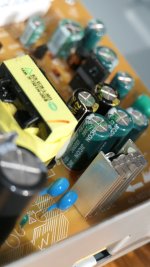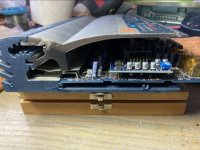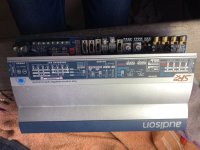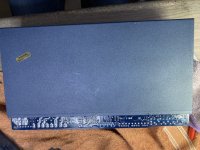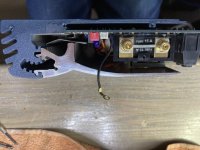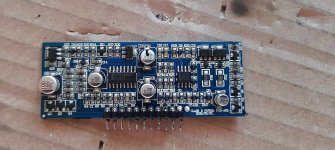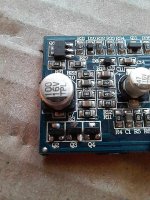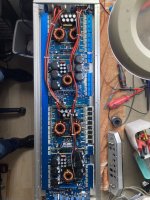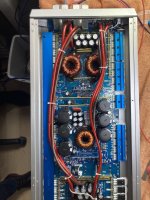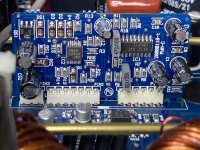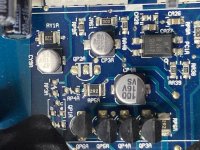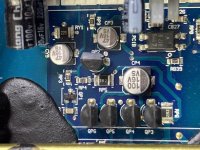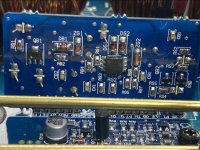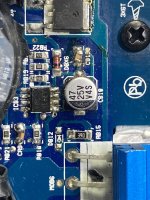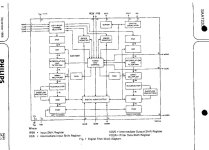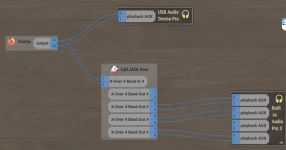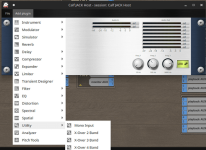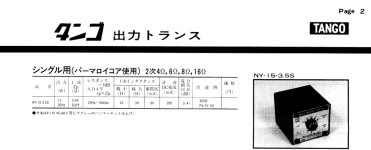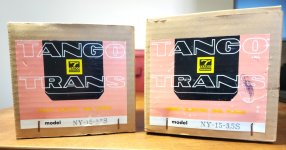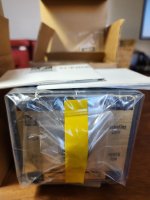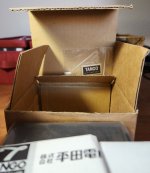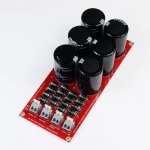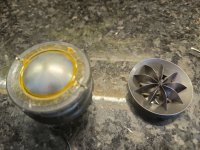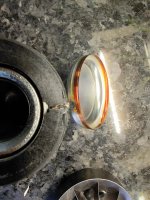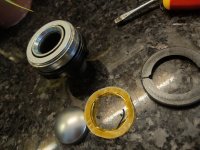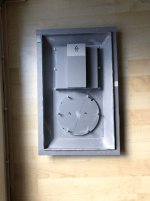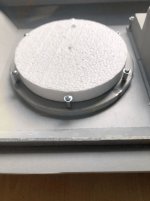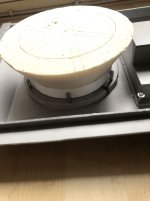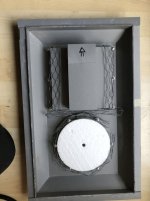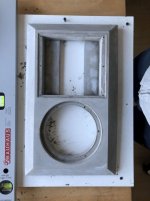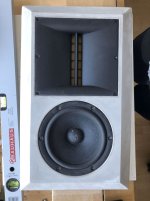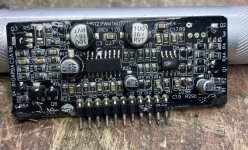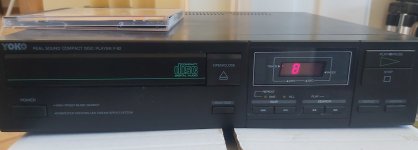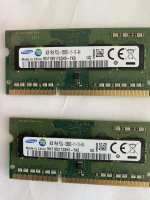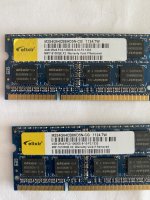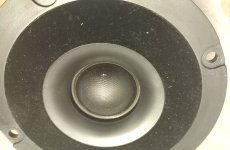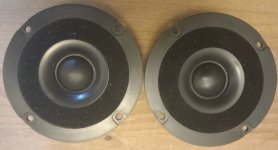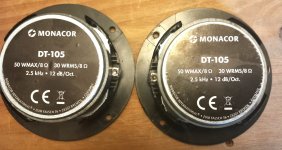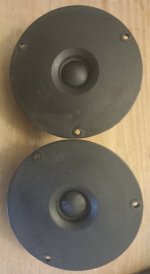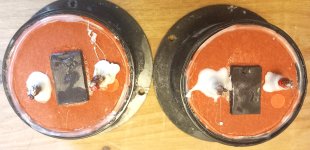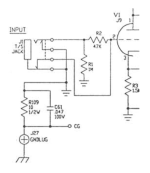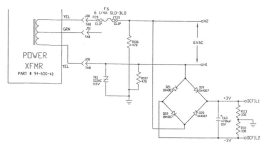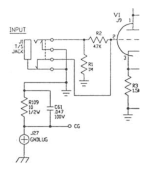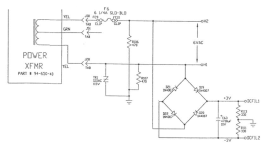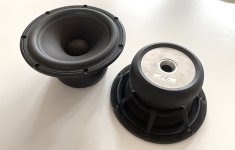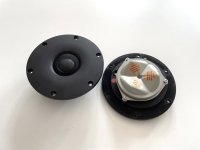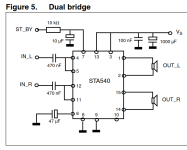I have already built a base enclosure in my car that is the main constraint.
It's about a 250l enclosure for a custom sundown NSv3 18 that I measured with DATS:
Currently the enclosure has a 24cm (10") wide 100cm long round port in it with a 90° bend in it that takes up about 50l of the enclosure and tunes it to about 24-25Hz.
I am not currently able to measure the sub, but I have an old impedance measurement from when it was in an IB setup:
I think it looks exactly like the Zv3 18 impedance, just with an Fs of 20Hz instead of 30Hz, so I used the semi-inductance parameters from here:
https://data-bass.com/#/drivers/5bec9a847950b30004de5b9b?_k=goo6c4
Here is a measurement of the current "trunk wall" enclosure that is sealed off from the trunk:
(This is with a DD715, but it gives an approximation of the cabin gain at the listening position, as there is no moving the enclosure.)
Now I realized I have the room to make a 100-120l front enclosure behind the rear seat:
(This is a pic with the NSv3 18")
I can build all the way up to those round braces on the sides and then a little more.
The third of the rear seat in front of the port can be felled down separately and I plan on keeping it that way most of the time.
So I came upon the HROAR design, which I thought would be impossible to fit in this space with this massive 18", but I came up with this design:
'
This is a drawing of the enclosure with approximated sizes. One square is approx. 10/3cm and the whole enclosure is 40cm tall.
The front chamber has an average depth of 30cm.
Now I still haven't found out if I can model this in Hornresp, because it's not a 6th order, nor an 8th order, nor a tapped horn.
Because I modeled it from the beginning as a tapped horn, but realized the simulated output was at the horn end and not at the front chamber port:
But the output was amazing compared to the current design:
So what if I just added the front chamber in front of the existing enclosure:
It's a lot better, but not as good as the tapped horn...
And one problem with this is still, that at 8kW of power, the 10" port is compressing the output severely, at least based on the port velocity:
So I thought, what if I simplify the initial HROAR design and increase the rear chamber volume and shorten the port, somehow, does it just become a series tuned 6th order bandpass?
And now I have close to the same output as with the tapped horn/ HROAR.
But I'd still have to model it more intricately than what Hornresp is able to do.
I should be able to offset the rear chamber and the "port" between rear line and front chamber and I should be able to model it with an expanding line in the rear, because I can't fit the current rear port any nice way with a constant port area without going into the boot of the sub and without wasting space in the rear. And I wouldn't want to make that many 180° bends as in the initial drawing.
It would have to be a double bass reflex with an additional chamber in front, or an 8th order with the driver between the second and third chamber, not first and second.
Is there any way to come closer with Hornresp or do I have to learn Akabak?
Any help with this or some comments on my design would be appreciated.
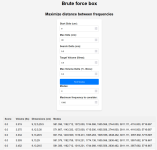
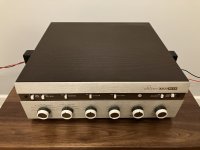
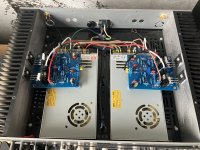
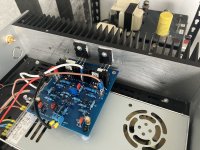

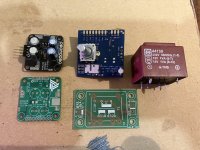



















![URL]]](/community/proxy.php?image=http%3A%2F%2F%5BURL%3D%27https%3A%2F%2Fi.ibb.co%2F9gYgnC2%2FIMG-0473.jpg%255b%2Fimg%27%5Dhttps%3A%2F%2Fi.ibb.co%2F9gYgnC2%2FIMG-0473.jpg%5B%2Fimg%5B%2FURL%5D%5D&hash=7e167281e769dfeffd21f04e72a6cafc)
